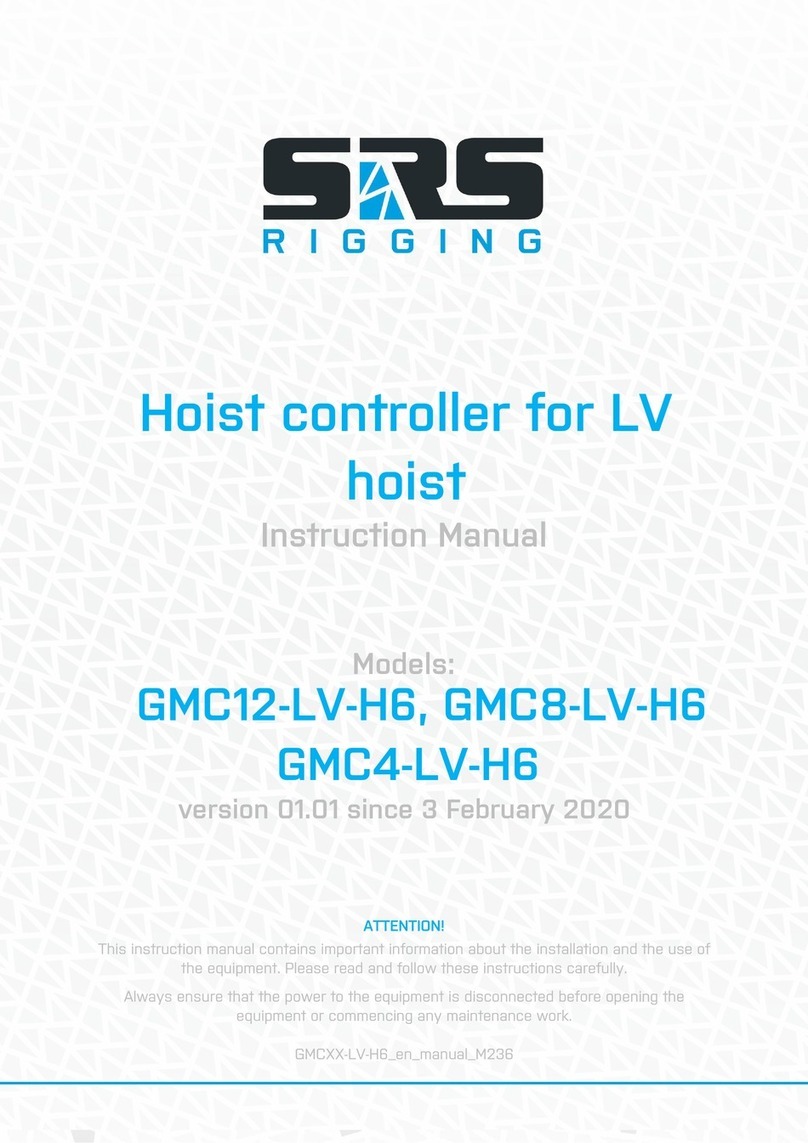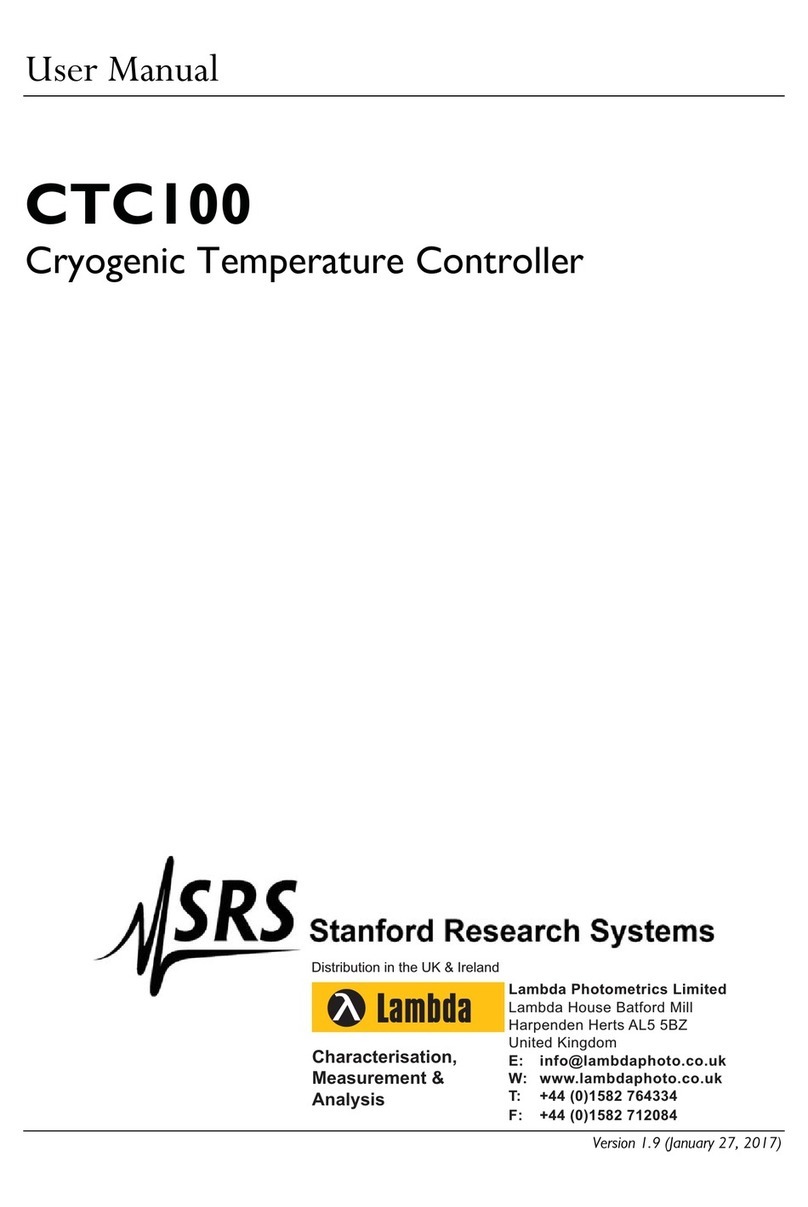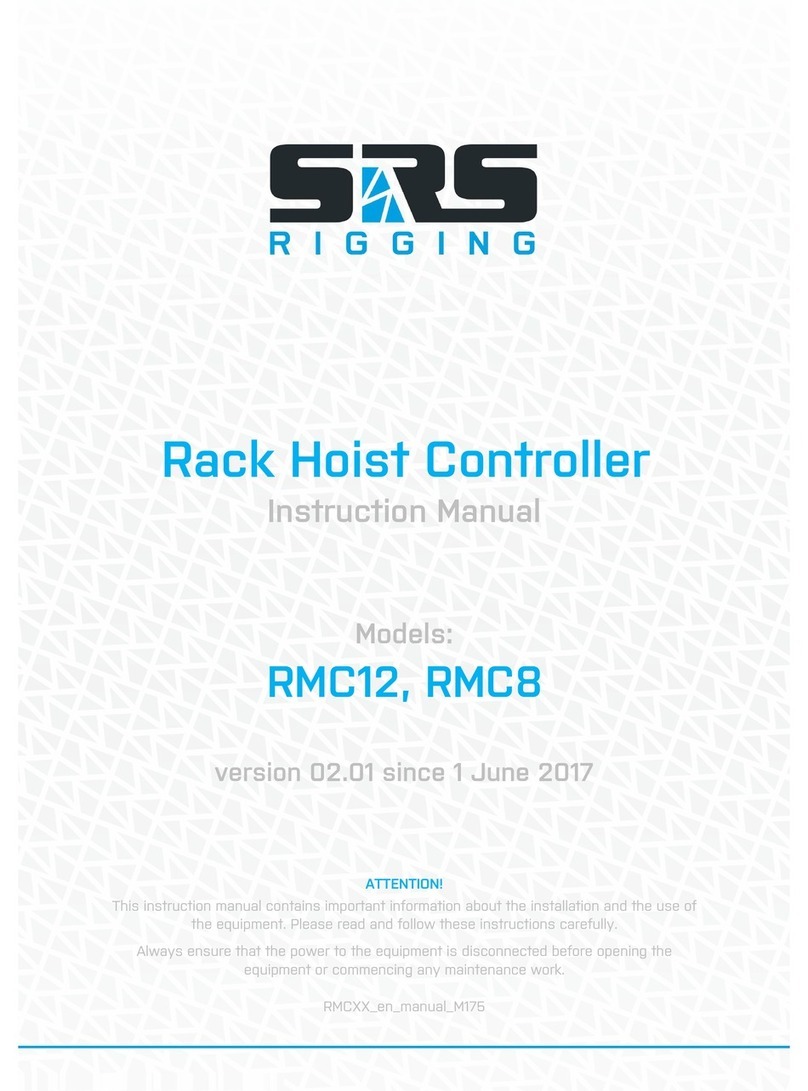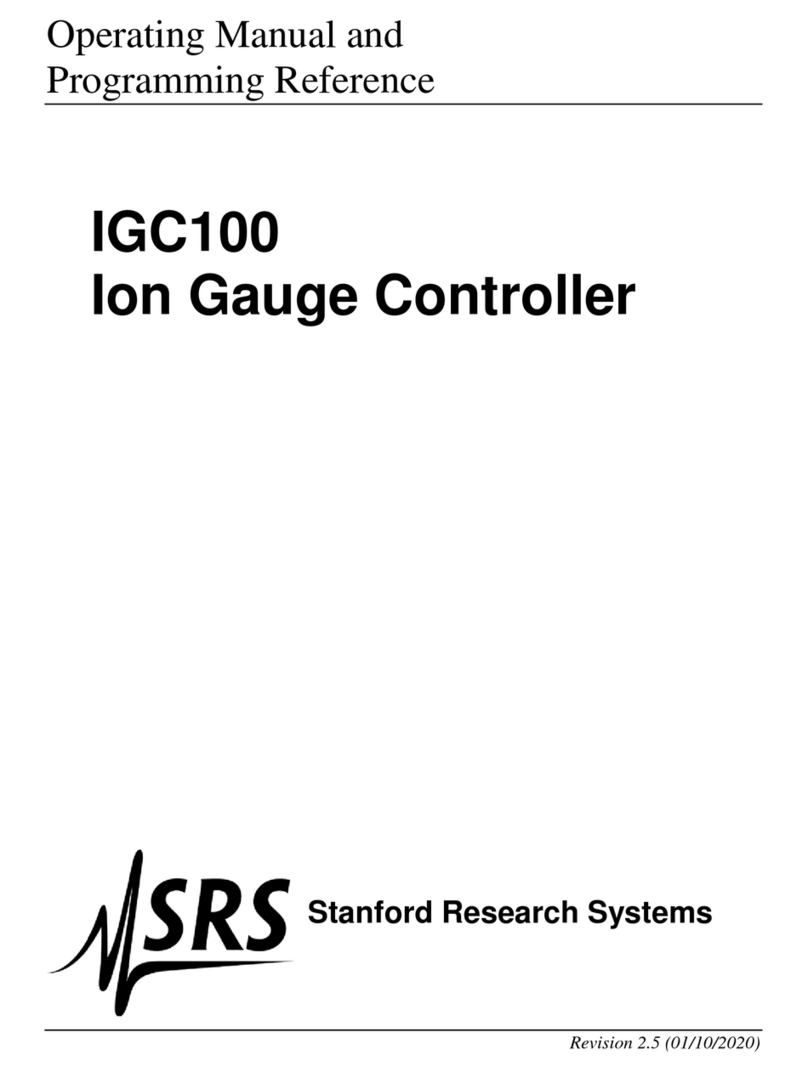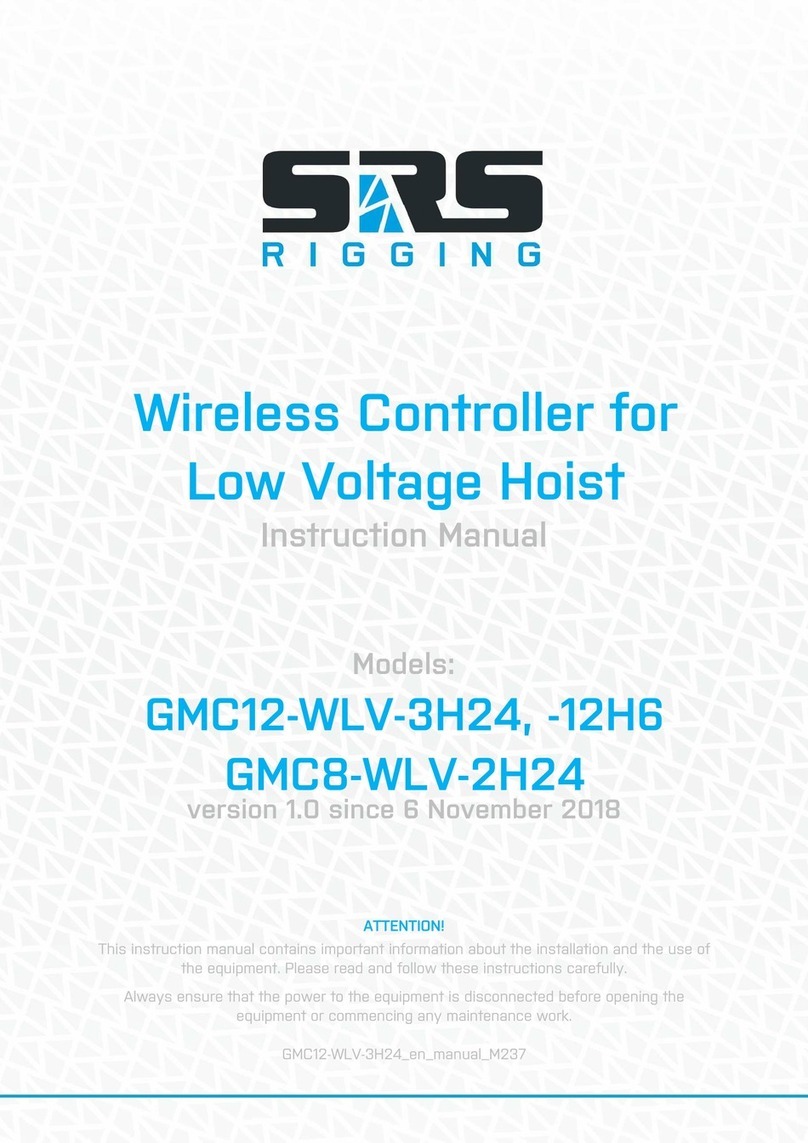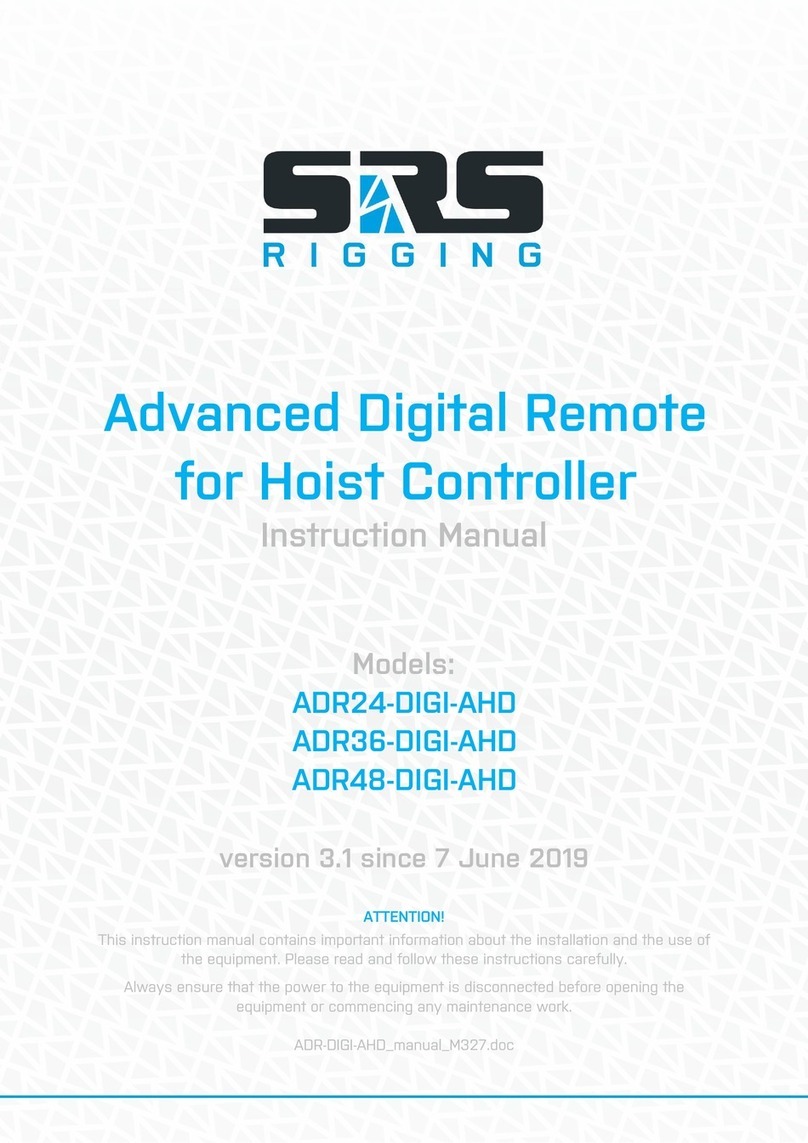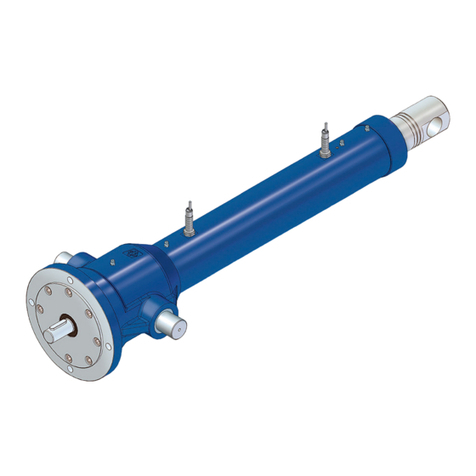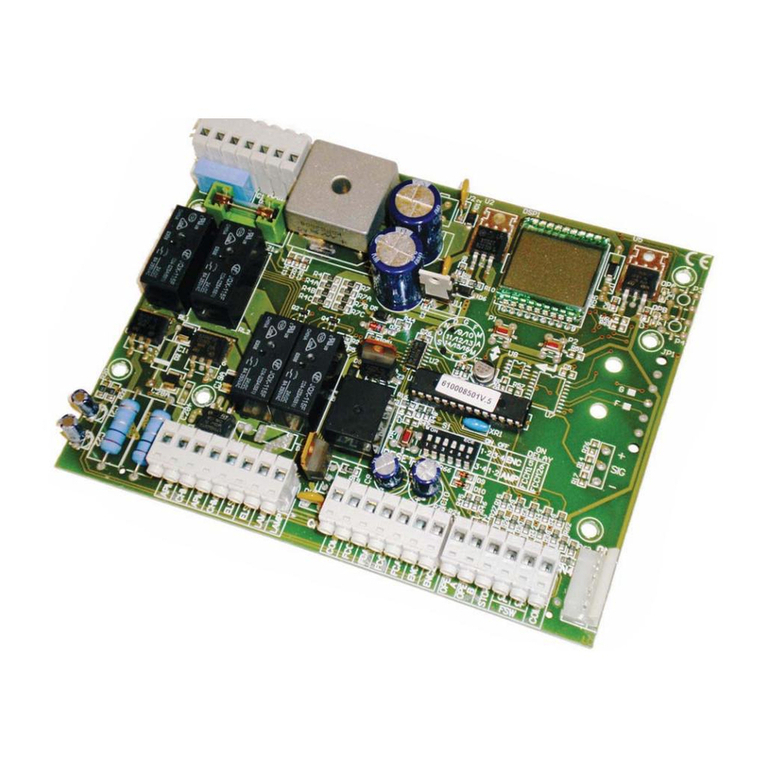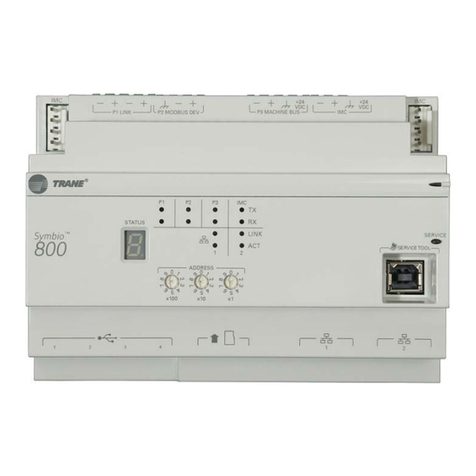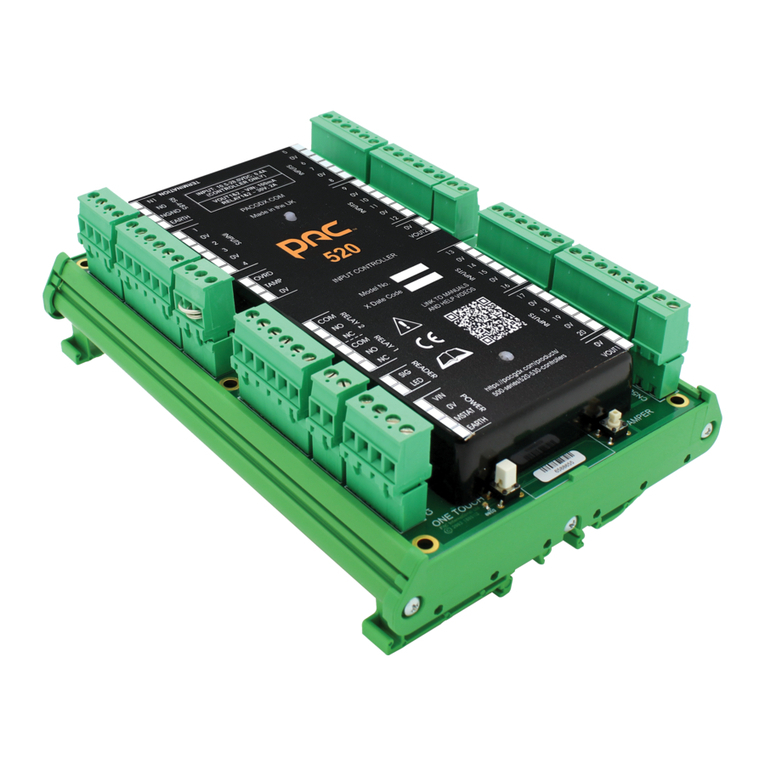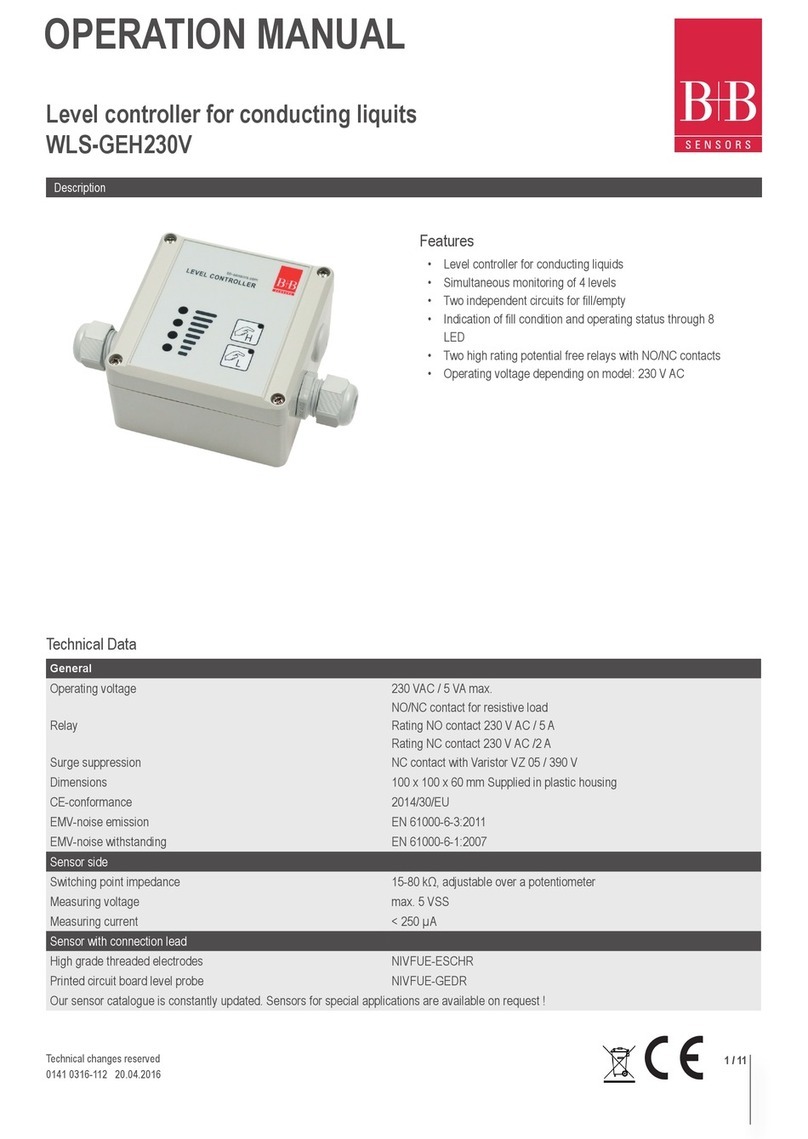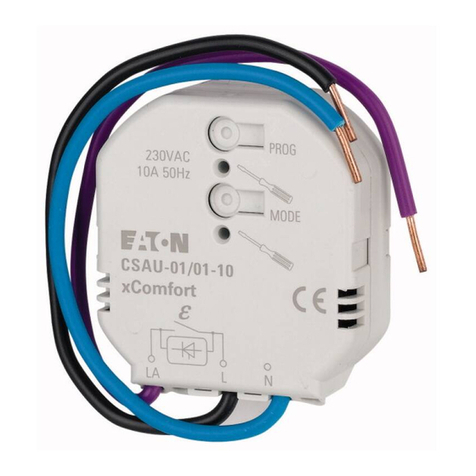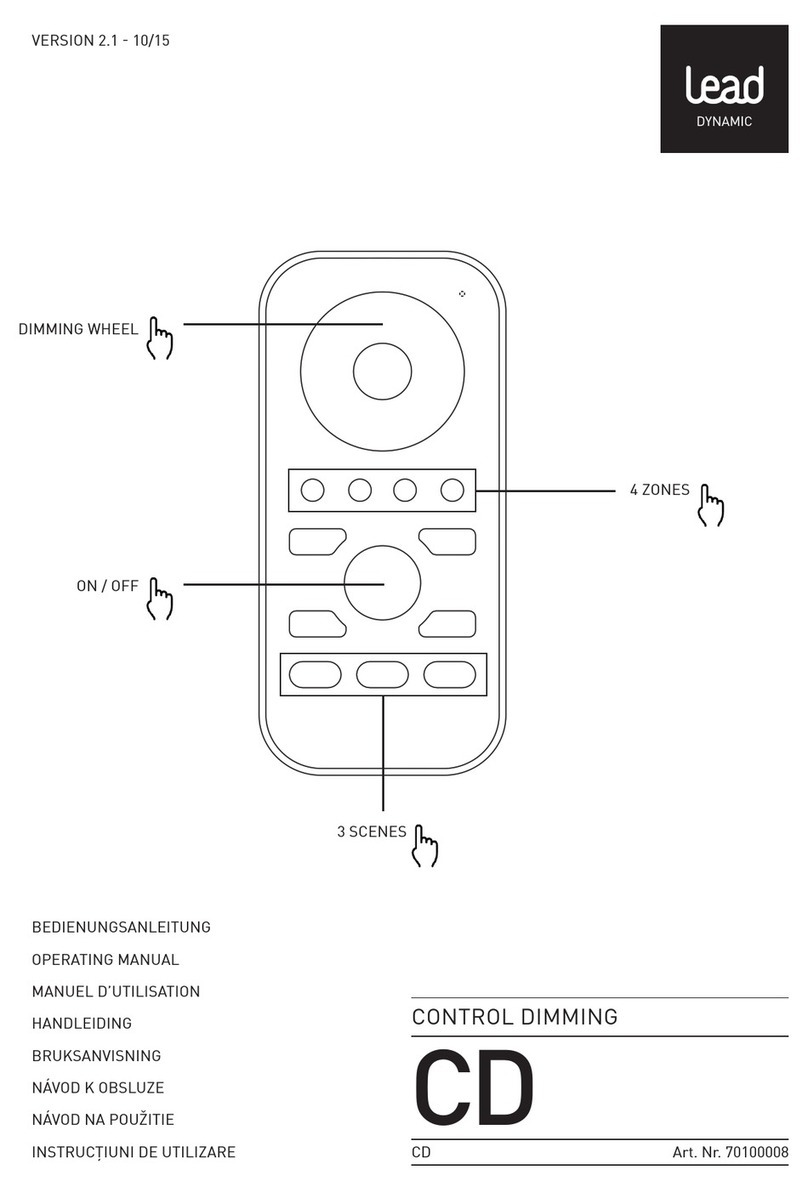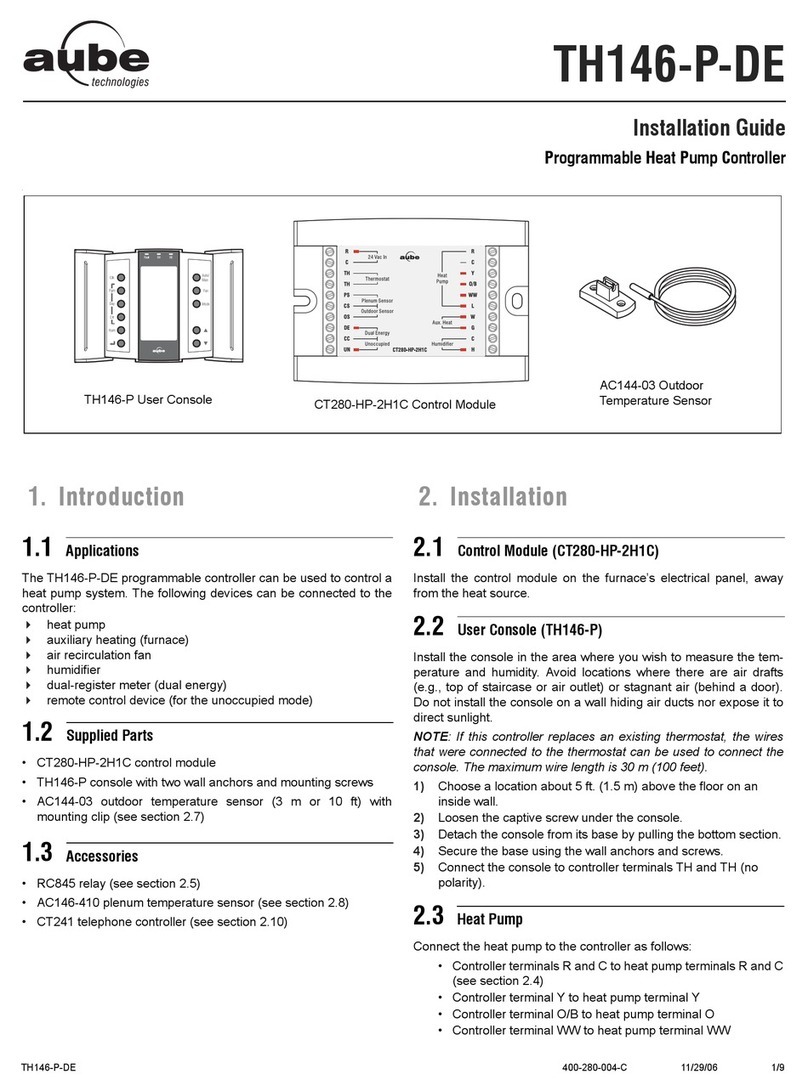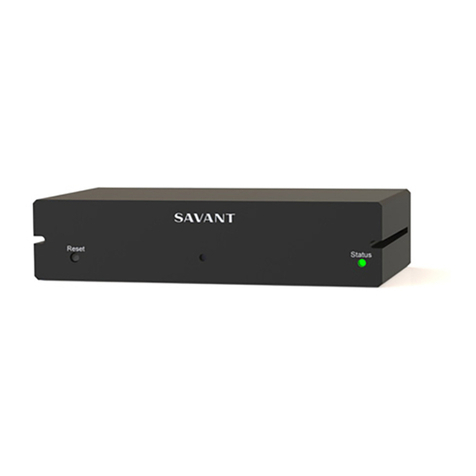SRS Labs SIM960 Operation manual

Operation and Service Manual
Analog PID Controller
SIM960
Stanford Research Systems
Revision 2.3 •October 10, 2013
Distribution in the UK & Ireland
Lambda Photometrics Limited
Lambda House Batford Mill
Harpenden Herts AL5 5BZ
United Kingdom
W: www.lambdaphoto.co.uk
T: +44 (0)1582 764334
F: +44 (0)1582 712084
Characterisation,
Measurement &
Analysis

Certification
Stanford Research Systems certifies that this product met its published specifications at the time
of shipment.
Warranty
This Stanford Research Systems product is warranted against defects in materials and workman-
ship for a period of one (1) year from the date of shipment.
Service
For warranty service or repair, this product must be returned to a Stanford Research Systems
authorized service facility. Contact Stanford Research Systems or an authorized representative
before returning this product for repair.
Information in this document is subject to change without notice.
Copyright c
Stanford Research Systems, Inc., 2003 – 2013. All rights reserved.
Stanford Research Systems, Inc.
1290–D Reamwood Avenue
Sunnyvale, CA 94089 USA
Phone: (408) 744-9040 •Fax: (408) 744-9049
Printed in U.S.A. Document number 9-01558-903
SIM960 Analog PID Controller

Contents
General Information iii
Safety and Precautions for Use ................ iii
Symbols ............................. iv
Notation ............................. v
Specifications .......................... vi
1 Getting Started 1 – 1
1.1 General ........................... 1–2
1.2 Front Panel Operation .................. 1–2
1.3 Rear Panel Monitoring .................. 1–7
1.4 SIM Interface ........................ 1–8
2 Advanced Topics 2 – 1
2.1 PID Tuning Basics ..................... 2–2
2.2 Ziegler-Nichols’ Tuning ................. 2–5
2.3 Anti-Windup and Conditional Integration ....... 2–7
2.4 Bumpless Transfer ..................... 2–8
3 Remote Operation 3 – 1
3.1 Index of Common Commands .............. 3–2
3.2 Alphabetic List of Commands .............. 3–4
3.3 Introduction ........................ 3–7
3.4 Commands ......................... 3–8
3.5 Status Model ........................ 3–25
4 Performance Tests 4 – 1
4.1 Getting Ready ....................... 4–2
4.2 Performance Tests ..................... 4–2
4.3 Calibration ......................... 4–6
5 Circuitry 5 – 1
5.1 Circuit Descriptions .................... 5–2
5.2 Parts Lists ......................... 5–4
5.3 Schematic Diagrams ................... 5–7
i

ii Contents
SIM960 Analog PID Controller

General Information
Safety and Precautions for Use
Because of the variety of uses for the SIM960, those responsible for
the application and use of this control equipment must satisfy them-
selves that all necessary steps have been taken to assure that each
application and use meets all performance and safety requirements,
including any applicable laws, regulations, codes and standards.
The SIM960 is not designed, intended, or sold for use in hazardous
WARNING environments requiring fail-safe operation, including without lim-
itation, operation of nuclear facilities, aircraft or spacecraft control
systems, and life support or weapons systems. The user must assure
that any failure or misapplication of the SIM960 cannot lead to a con-
sequential failure of any interconnected equipment that could lead
to loss of life or limb, or property damage.
The illustrations, charts, and discussions shown in this manual are
intended solely for purposes of example. Since there are many vari-
ables and requirements associated with any particular control ap-
plication, Stanford Research Systems does not assume responsibility
or liability for actual use based upon the examples shown in this
publication.
Service
Do not install substitute parts or perform any unauthorized modifi-
cations to this instrument.
The SIM960 is a double-wide module designed to be used inside the
SIM900 Mainframe. Do not turn on the power to the Mainframe or
apply voltage inputs to the module until the module is completely
inserted into the mainframe and locked in place. Do not exceed
±18 V at any input or output connector.
iii

iv General Information
Symbols you may Find on SRS Products
Symbol Description
Alternating current
Caution - risk of electric shock
Frame or chassis terminal
Caution - refer to accompanying documents
Earth (ground) terminal
Battery
Fuse
On (supply)
Off (supply)
SIM960 Analog PID Controller

General Information v
Notation
The following notation will be used throughout this manual.
A warning means that injury or death is possible if the instructions
WARNING are not obeyed.
A caution means that damage to the instrument or other equipment
CAUTION is possible.
Typesetting conventions used in this manual are:
•Front-panel buttons are set as [Button];
[Adjust ] is shorthand for “[Adjust ] & [Adjust ]”.
•Front-panel indicators are set as Overload.
•Remote command names are set as *IDN?.
•Literal text other than command names is set as OFF.
Remote command examples will all be set in monospaced font. In
these examples, data sent by the host computer to the SIM960 are set
as straight teletype font, while responses received by the host
computer from the SIM960 are set as slanted teletype font.
SIM960 Analog PID Controller

vi General Information
Specifications
Performance Characteristics
Min Typ Max Units
Amplifier Settings Control type Analog, PID+Offset
Input Range −10 +10 V common mode
−1+1Vdifferential
Proportional gain 10−1103V/V
Integral gain 10−25×1051/s
eff. time const. 2×10−6102s
Derivative gain 10−610 s
Offset −10 +10 V
resolution 1 mV
Amplifier Performance Bandwidth 100 kHz
Propagation delay 1 μs
Noise (f>20 Hz) 8 nV/√Hz, RTI
Output Range −10 +10 V
Configuration Parameter control Digital
Parameter accuracy 1 %
Stability 200 ppm/◦C
Display Resolution 4 digits
Inputs Measure BNC, 1 MΩ,±10 V range
Ext. Setpoint BNC, 1 MΩ,±10 V range
Setpoint Generator Setting −10 +10 V
resolution 1 mV
Ramp Rate 10−3104V/s
Noise (f>100 Hz) 20 nV/√Hz, RTI
Operating Temperature [14] 0 40 ◦C
Power ±15,+5VDC
Supply current 150 (±15 V), 80 (+5V) mA
General Characteristics
Number of inputs 2
Interface Serial (RS-232) through SIM interface
Connectors BNC (3 front, 2 rear); DB–15 (male) SIM interface
Weight 2.1 lbs
Dimensions 3.0 W×3.6 H×7.0 D
SIM960 Analog PID Controller

1 Getting Started
This chapter gives you the necessary information to get started
quickly with your SIM960 Analog PID Controller.
In This Chapter
1.1 General ........................... 1–2
1.2 Front Panel Operation .................. 1–2
1.2.1 Inputs ....................... 1–4
1.2.2 Ramping ...................... 1–5
1.2.3 Connections .................... 1–5
1.2.4 Bar displays .................... 1–6
1.2.5 Restoring the default configuration ...... 1–6
1.3 Rear Panel Monitoring .................. 1–7
1.3.1 Error Monitor ................... 1–7
1.3.2 Input Setpoint Monitor ............. 1–7
1.4 SIM Interface ....................... 1–8
1.4.1 SIM interface connector ............. 1–8
1.4.2 Direct interfacing ................. 1–8
1–1

1–2 Getting Started
1.1 General
The SIM960 is designed to maintain stability in systems requiring
low noise and wide bandwidth. The controller design consists of
a front end differential input amplifier, followed by an integrator
and a differentiator, arranged in what is known as the “ideal” PID
topology. The input amplifier (the “error amplifier”) differences the
the two single ended inputs, Setpoint and Measure, and multiplies
the resulting error signal (ε) by the proportional gain. The amplified
error is then passed to three parallel control paths:
1. The proportional path, no change is made to the signal.
2. The integral path with gain I.
3. The derivative path gain D.
These three signals can be independently selected to combine at a
summing amplifier, which is then buffered to the output. A constant
offset can also be added, which can be useful in applications that do
not use the Iterm. Mathematically, the behavior is
ε≡Setpoint −Measure (1.1)
Output =P×ε+Iεdt+Ddε
dt+Offset (1.2)
where the three terms within the braces, and Offset, can be indepen-
dently enabled or zeroed.
For internal stability, the actual differentiator is “rolled off” to limit
the derivative gain to +40 dB.
The output circuitry includes a soft limiter that turns on when the
output exceeds user specified upper and lower limits and clamps the
output to the limit level. The output bar display on the right side of
the front panel has red LEDs at each end to indicate when the output
is being limited.
1.2 Front Panel Operation
This section discusses the essentials of operating the SIM960 locally,
from the front panel. See Chapter 3 for remote operation.
•Press [Select] to choose which configuration parameter to view
in the numerical display. The indicator to the left of each
descriptor shows which parameter is displayed. When Shift
is highlighted, pressing [Select] steps the parameter selection
backwards.
SIM960 Analog PID Controller

1.2 Front Panel Operation 1–3
Figure 1.1: The SIM960 front panel.
•The P,I,D,Offset, and SP Ramp parameters may be en-
abled/disabled with [On/Off]. Each of these parameters has an
additional indicator to the right of the descriptor to indicate the
on/offstatus.
•The Limits parameter has two sublevels: upper and lower
limit.
•The Setpoint,Measure,P×ε, and Output values are display-
only. All the other values can be changed using the [ ] but-
tons; the digit selected for adjustment is indicated by its flash-
ing brightness. Change the digit selection while Shift is high-
lighted ([ ]).
•There are two formats for the numeric display: Exponential,
and fixed decimal. The format used for a particular param-
eter depends on its range. Parameters P,I,Dand SP Ramp
(rate) vary by several orders of magnitude and are therefore
displayed in exponential format, while all other parameters
range from −10 V to +10V and are displayed in fixed decimal
format.
•For exponential format, the mantissa may be changed using the
up/down arrow buttons. The active digit may be selected using
the left/right buttons (=shift, followed by up/down button).
SIM960 Analog PID Controller

1–4 Getting Started
The right-most digit (after ) is the power of ten exponent.
For example, the display =1200.
•The Pparameter has a selectable “±” indicator before the
mantissa.This allows the polarity of the controller to be tog-Polarity =⇒gled by the user. All other exponentially displayed parameters
are unipolar, so no sign is displayed for these parameters.
•In fixed decimal format a value between −10 and +10 may be
selected using [ ] (and [Shift]).
•The two outputs, P×ε, and Output , are accompanied by bar
displays on the right side of the front panel. P×εsimply
ranges from −10 V to +10 V. However, since the controller out-
put ranges between the user-programmed upper and lower
limits, the output bar display is normalized to that range. For
example, if the limits were set to +5 V and −1 V, the full range
of the bar display would be 6 V, and 0 V would no longer cor-
respond to the center of the bar display, but would be 1/6th of
the way up from the bottom. The default limits are ±10 V.
•Use [Setpoint] in the INPUTS section of the front panel to
choose between an external setpoint input, and the internally
generated setpoint. An external setpoint can be supplied at the
Setpoint BNC input. When the internal setpoint is selected the
BNC connector is disconnected from the SIM960 circuitry.
•The Output BNC connector can be toggled between PID Con-
trol mode and Manual mode using [Output] (in the OUTPUT
section of the front panel). In manual mode, the SIM960 output
is set to the value indicated by the manual parameter.
1.2.1 Inputs
The common mode range of the “Measure” and “Setpoint” inputs
extends from −10 V to +10 V. If either input is outside this range, the
overload LED indicator lights.
The differential input range is ±1V. Whenever the difference between
Setpoint and Measure exceeds this range, the overload LED indica-
tor turns on. When connected with overall negative feedback and
reasonably well tuned, the SIM960 keeps the difference between the
setpoint and measure inputs as small as possible, so the differential
input range is unlikely to be exceeded. Before the SIM960 has been
tuned for a given system, however, this may not be true. It is helpful
to keep in mind that exceeding the ±1Vdifferential input range will
saturate the error amplifier, even if the output signal would otherwise
be within the upper and lower Limits setting. In such situations, the
controller will be effectively limited at some intermediate value.
SIM960 Analog PID Controller

1.2 Front Panel Operation 1–5
1.2.2 Ramping
The ramping feature of the SIM960 PID Controller allows the user to
linearly slew the internally generated setpoint level from its current
value to a new value. The slew rate may be changed using the
SP Ramp parameter on the front panel.
The indicator to the right of SP Ramp shows whether ramp-
ing is enabled or disabled. Use [On/Off] (with SP Ramp se-
lected) to enable/disable ramping. When disabled, changes to
the Internal Setpoint parameter take effect immediately. When
ramping is enabled, however, changes to Internal Setpoint do not
immediately take effect. Instead, Internal (in the Setpoint block of
the INPUTS section of the front panel) begins to blink, showing that
a new setpoint has been entered and a ramp event is now pending.
To begin the ramp, press [Ramp Start/Stop]. Now, the Internal blink
rate doubles, indicating that the setpoint is ramping. To pause the
ramp, press [Ramp Start/Stop] ˙
When the ramp is paused, the In-
ternal blink rate becomes uneven. To continue the ramp, press
[Ramp Start/Stop] again. When the setpoint reaches the new pro-
grammed value, the ramp automatically terminates, and Internal
stops blinking.
Note, SP Ramp has no sign in the numerical display. This is be-
cause the polarity of the ramp rate is unambiguously determined
by whether the newly entered setpoint is greater or less than the
current setpoint. The range of available ramp rates is from 1 mV/s
to 10,000 V/s. For ramp rates less than or equal to 1 V/s, the rate
is dynamically trimmed based on real-time measurements from the
onboard A-to-D converter.
1.2.3 Connections
Connect the sensor output of the system to be controlled to the “Mea-
sure” input of the SIM960˙
If an external setpoint is to be supplied, con-
nect this to the “Setpoint” input, and use the button in the INPUTS
section of the front panel to select “External” input. Before connect-
ing the SIM960 output to the system to control, it may be necessary to
set the user programmable output upper and lower Limits to guard
against damaging the system. Care should be taken to insure that
the programmed output range is consistent with the system input
range. Once the limits have been programmed, connect the SIM960
output to the system input.
SIM960 Analog PID Controller

1–6 Getting Started
1.2.4 Bar displays
Two LED bar displays have been included on the right side of the
SIM960 front panel to provide visual information about the P×ε
and Output signals. This reduces the need to frequently return to
those fields on the numerical display while trying to adjust other
tuning parameters. Some time should be taken to understand what
information these bar displays provide.
Each bar has two lighted LEDs; one for the maximum peak of the
signal, and one for the minimum peak. The peaks are determined
with respect to time variation of the signal, and they decay back to
the DC level with a decay time of ∼100 ms.
To understand how a signal is represented in the bar display, con-
sider an input sine wave of frequency 1 Hz. Since frequency is low
compared to the inverse of the decay time, the maximum and min-
imum peak values are indistinguishable, and the signal appears as
a single LED that tracks the sine wave. As the frequency increases,
the maximum peak does not decay quickly enough to track the neg-
ative excursions the signal, and the minimum peak also fails to track
positive excursions. So there appear to be two lighted LEDs slightly
separated, roughly tracking the sine wave. As the frequency is fur-
ther increased to well above the decay time inverse, the two lighted
LEDs no longer decay at all from their peak levels, so there appear
to be two lighted LEDs marking the maximum and minimum peaks
of the sine wave.
Thus, a slowly varying signal appears as a single lighted LED in the
display, tracking the signal changes with time. But a quickly varying
signal, however, appears as two lighted LEDs marking the maximum
and minimum excursions of the signal in time.
The range of the P×εbar display is ±10 V. The Output bar display
has a range determined by the user programmed upper and lower
limits. For example, if the limits were set to +5 V and −1 V, the full
range of the bar display would be 6 V, and 0 V would no longer
correspond to the center of the bar display, but would be 1/6th of the
way up from the bottom. Also, the Output bar display has a red LED
on each end to indicate whether the controller output is saturated at
its limit.
1.2.5 Restoring the default configuration
The default configuration of the SIM960 can be restored in either of
two ways: From the front panel, or via the remote interface.
To restore from the front panel, first turn offthe power to the SIM960
by switching its SIM900 Mainframe to “Standby,” then switch the
SIM960 Analog PID Controller

1.3 Rear Panel Monitoring 1–7
power on while holding down [Ramp Start/Stop]. Keep the button
depressed for about one second after power comes on.
The default configuration can also be restored via the remote interface
using the *RST command.
1.3 Rear Panel Monitoring
Two analog monitor signals are available at the rear panel of the
SIM960 (see Figure 1.2).
Figure 1.2: The SIM960 rear panel.
1.3.1 Error Monitor
The upper BNC connector carries a buffered copy of the P×εoutput
of the error amplifier. This output is always available, even when
the Pterm is disabled from the control law. It is also active when the
main SIM960 output is set to Manual mode.
1.3.2 Input Setpoint Monitor
The lower BNC is a copy of the internally generated setpoint voltage.
This output is also always available, even when the Setpoint mode
is set to External.
SIM960 Analog PID Controller

1–8 Getting Started
1.4 SIM Interface
The primary connection to the SIM960 Analog PID Controller is the
rear-panel DB–15 SIM interface connector. Typically, the SIM960 is
mated to a SIM900 Mainframe via this connection, either through
one of the internal mainframe slots, or the remote cable interface.
It is also possible to operate the SIM960 directly, without using the
SIM900 Mainframe. This section provides details on the interface.
The SIM960 has no internal protection against reverse polarity, missing
CAUTION supply, or overvoltage on the power supply pins. Misapplication of power
may cause circuit damage. SRS recommends using the SIM960 together
with the SIM900 Mainframe for most applications.
1.4.1 SIM interface connector
The DB–15 SIM interface connector carries all the power and commu-
nications lines to the instrument. The connector signals are specified
in Table 1.1
Direction
Pin Signal Src ⇒Dest Description
1 SIGNAL GND MF ⇒SIM Ground reference for signal
2−STATUS SIM ⇒MF Status/service request (GND =asserted, +5V=idle)
3RTS MF ⇒SIM HW Handshake (+5V=talk; GND =stop)
4CTS SIM ⇒MF HW Handshake (+5V=talk; GND =stop)
5−REF 10MHZ MF ⇒SIM 10 MHz reference (optional connection)
6−5V MF ⇒SIM Power supply (no connection in SIM960)
7−15 V MF ⇒SIM Power supply (analog circuitry)
8PS RTN MF ⇒SIM Power supply return
9CHASSIS GND Chassis ground
10 TXD MF ⇒SIM Async data (start bit =“0”=+5 V; “1” =GND)
11 RXD SIM ⇒MF Async data (start bit =“0”=+5 V; “1” =GND)
12 +REF 10MHz MF ⇒SIM 10 MHz reference (optional connection)
13 +5V MF ⇒SIM Power supply (digital circuitry)
14 +15 V MF ⇒SIM Power supply (analog circuitry)
15 +24 V MF ⇒SIM Power supply (no connection in SIM960)
Table 1.1: SIM Interface Connector Pin Assignments, DB-15
1.4.2 Direct interfacing
The SIM960 is intended for operation in the SIM900 Mainframe, but
users may wish to directly interface the module to their own systems
without the use of additional hardware.
SIM960 Analog PID Controller

1.4 SIM Interface 1–9
The mating connector needed is a standard DB–15 receptacle, such as
Amp part # 747909-2 (or equivalent). Clean, well-regulated supply
voltages of +5,±15 VDC must be provided, following the pin-out
specified in Table 1.1. Ground must be provided on Pins 1 and 8,
with chassis ground on Pin 9. The −STATUS signal may be monitored
on Pin 2 for a low-going TTL-compatible output indicating a status
message.
1.4.2.1 Direct interface cabling
If the user intends to directly wire the SIM960 independent of the
SIM900 Mainframe, communication is usually possible by directly
connecting the appropriate interface lines from the SIM960 DB–15
plug to the RS-232 serial port of a personal computer. 1Connect RXD
from the SIM960 directly to RD on the PC, TXD directly to TD, and
similarly RTS→RTS and CTS→CTS. In other words, a null-modem
style cable is not needed.
To interface directly to the DB–9 male (DTE) RS-232 port typically
found on contemporary personal computers, a cable must be made
with a female DB–15 socket to mate with the SIM960, and a female
DB–9 socket to mate with the PC’s serial port. Separate leads from
the DB–15 need to go to the power supply, making what is sometimes
know as a “hydra” cable. The pin-connections are given in Table 1.2.
DB–15/F to SIM960 Name
DB–9/F
3←→ 7RTS
4←→ 8 CTS
10 ←→ 3 TxD
11 ←→ 2 RxD
5 Computer Ground
to P/S
7←→ −15 VDC
14 ←→ +15 VDC
13 ←→ +5 VDC
8,9 ←→ Ground (P/S return current)
1←→ Signal Ground (separate wire to Ground)
Table 1.2: SIM960 Direct Interface Cable Pin Assignments
1Although the serial interface lines on the DB-15 do not satisfy the minimum
voltage levels of the RS-232 standard, they are typically compatible with desktop
personal computers
SIM960 Analog PID Controller

1–10 Getting Started
1.4.2.2 Serial settings
The initial serial port settings at power-on are: 9600 Baud, 8–bits, no
parity, 1 stop bit, and RTS/CTS flow control. These may be changed
with the BAUD,FLOW,orPARI commands.
The maximum standard baud rate that the SIM960 supports is 38400.
The minimum baud rate is 110. Above 38400, the SIM960 can be
set to the following (non-RS–232-standard) baud rates: 62500, 78125,
104167, 156250. Note that these rates are typically not accessible on
a standard PC RS–232 port, but can be used between the SIM960 and
the SIM900 Mainframe.
SIM960 Analog PID Controller

2 Advanced Topics
This chapter discusses a simple “closed-loop” tuning procedure,
along with some of the advanced features of the SIM960 Analog
PID Controller.
In This Chapter
2.1 PID Tuning Basics .................... 2–2
2.2 Ziegler-Nichols’ Tuning ................. 2–5
2.2.1 Open-loop tuning ................. 2–5
2.2.2 Closed-loop tuning ................ 2–6
2.3 Anti-Windup and Conditional Integration ...... 2–7
2.4 Bumpless Transfer .................... 2–8
2.4.1 Manual-to-PID .................. 2–8
2.4.2 PID-to-Manual .................. 2–8
2–1

2–2 Advanced Topics
2.1 PID Tuning Basics
PID control provides a simple way to minimize the effect of dis-
turbances to a system. The system consists of a closed feedback
loop between two elements, the SIM960 controller and the user pro-
cess. The controller has two inputs, Setpoint and Measure, and an
Output. The process consists of a power source that can be directly
changed by the controller, in conjunction with a sensor to monitor the
process behavior. The sensor signal, after any necessary condition-
ing, is the process output. This should be connected to the Measure
input of the SIM960, and the SIM960 Output should be connected to
the process input, forming a feedback loop.
The difference between the Setpoint and Measure inputs is the error
signal, ε≡Setpoint −Measure (Eqn 1.1). In the SIM960 the error
signal is amplified by the proportional gain. The controller uses the
amplified error, P×ε, to generate three control signals:
1. Proportional, the Pamplified error with no changes.
2. Integral, the time integral of the amplified error signal multi-
plied by a gain coefficient I.
3. Derivative, the time derivative of the amplified error signal
multiplied by a gain coefficient D.
These signals, as well as an Offset , are combined at a summing
junction to produce the controller output (see Eqn 1.2). Figure 2.1
shows a schematic representation of the SIM960 controller topology.
Note the proportional gain coefficient is common to all three terms, so
the net integral and derivative gains are P×Iand P×D, respectively,
whether or not proportional control is enabled.
The controller monitors the process output and makes small adjust-
ments to the process in order to minimize deviations of Measure
from Setpoint due to external disturbances. To accomplish this, the
controller must be properly tuned, meaning that the gains for each
of the three control signals—proportional, integral, and derivative—
must be chosen appropriately to match the behavior of the process.
A well-tuned controller should be able to maintain a stable process
output.
The control loop feedback should be negative. However, because
the polarity of the process response to the controller output is an
arbitrary function of the design of the system, it is vital that the
controller polarity be chosen properly. Based on the topology of the
SIM960 design, feedback polarity can be changed simply by changing
the polarity of the proportional gain parameter P. The user must
first determine which polarity will provide negative feedback. If the
SIM960 Analog PID Controller
Table of contents
Other SRS Labs Controllers manuals
Popular Controllers manuals by other brands
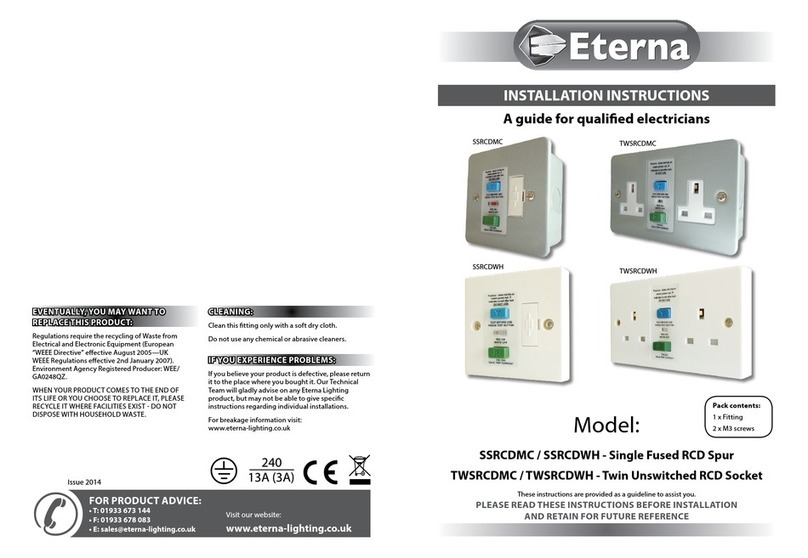
Eterna
Eterna SSRCDMC installation instructions

Tews Technologies
Tews Technologies TVME200 Series user manual

Hostess
Hostess 550 16 Hardware Installation Card
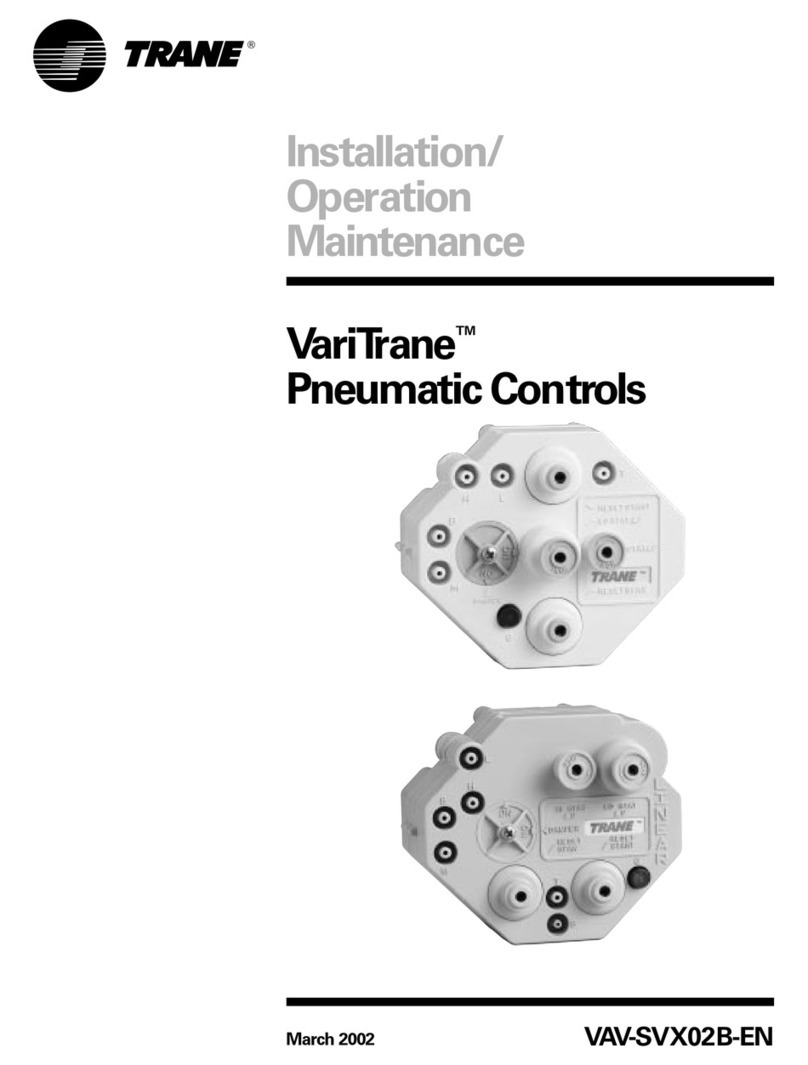
Trane
Trane VariTrane VAV-SVX02B-EN Installation operation & maintenance

Panasonic
Panasonic TY-TP10W operating instructions
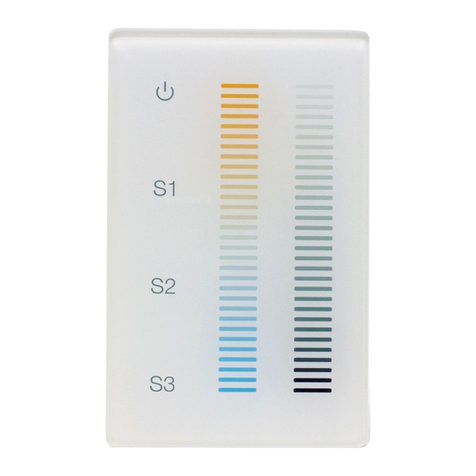
DIODE LED
DIODE LED DI-DMX-WIFI-WMDC-1ZWH installation guide
